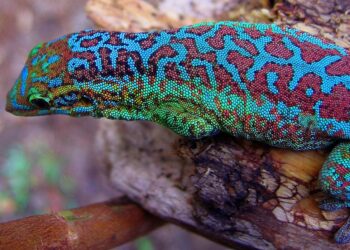The serama is a real cuddly chicken. It is a small chicken, weighing no more than 500 grams. Seramas are loved for their sweet and calm nature. Because of this, and because of the small size, they are very suitable as pets. A serama likes attention and does not mind being lifted.
Children can pet and cuddle these chickens, they remain seated. The rooster crows, but much less loudly than a large rooster. Seramas are not bred for color, they come in a variety of colors.
The serama, a small cuddly chicken
The serama is the smallest breed of chicken in the world. It is a tropical bird that does not tolerate the cold well. The animal originally comes from Malaysia, where it originated from a cross between a Japanese and Malaysian bantam. In Malaysia, the serama soon became popular as a pet, more popular even than dogs and cats. In 2006 the serama came to the Netherlands and on June 16, 2012, the serama was also recognized as a breed here.
Length and weight
The serama is also popular in the Netherlands. This is mainly due to the sweet character and the small size. An adult serama only grows to eight to eight inches long and can reach A, B, or C size. The chickens with the A size are the smallest. Attempts to continue breeding with this format are often less successful than with the B and C format.
That’s probably because there is a limit to getting rid of a chicken. Seramas also weigh no more than 500 grams. The minimum weight is 200 grams for the hens. Roosters weigh slightly more, they have a minimum weight of 225 grams.
Reading suggestions: 400+ Good and Funny Chicken Names
The characteristics of a serama chicken
- It is a live chicken with a proud, proud attitude.
- Head and chest are carried high.
- The tail is also carried high.
- The wings are vertical and just don’t touch the ground.
- A sweet character.
- The rooster crows much less loudly than roosters of other chicken breeds.
There are three different types of seramas
- The smooth-feathered
- The silky
- The curly-feathered

Different eggs and chickens
Both the eggs and the chickens come in different colors. Eggs can be white or brown, in different shades. They are also very small: four eggs are about the same size as one normal egg. Seramas are not bred for color. It is therefore a surprise what comes out of the egg. The color does not matter for the inspections. The chickens can be white, brown, or black and a combination of these colors.
If you still want a certain color, you can take that into account when breeding. White chickens get white chicks. Do you prefer colored chickens? Then you take a rooster and a hen of the same color. This increases the chance of offspring with the desired color. The serama cannot be bred in a certain size. When the chickens hatch, some will be smaller than average, a few bigger, and the rest are average. It is true that larger seramas have less chance of really small chickens.
Laying and incubating eggs
Serama chickens are sexually mature after sixteen to eighteen weeks. Small chickens reach sexual maturity a little later. The time of year also influences the sexual maturity of the chickens. Seramas lay eggs all year round. These are different in size. Depending on the incubation temperature, the eggs hatch after nineteen to twenty days. That is faster than with other chicken breeds when the eggs hatch after twenty or twenty-one days.
Why don’t the eggs hatch?
Not all serama eggs hatch. Seramas carry a lethal gene, which means that there are embryos that do not develop. At the end of the incubation period, they die in the egg. The chicks can also die in the first days after hatching. This often happens without an identifiable cause.
Large eggs hatch more often than small eggs. Large eggs contain larger chicks, which are stronger and can get through the relatively thick membranes of the egg better. The first two weeks are important for the chicks’ chances of survival. The smallest children have less chance of survival during this period.
Thin or thick eggshells
The eggshell can be very thin or thick. There are several factors that influence the thickness of the eggshell. It partly depends on the chicken. Some hens lay thin-shelled eggs, others with a thick shell. The age of a chicken also plays a role. The shell becomes thinner in older chickens. In addition, nutrition is important.
A thin shell can also indicate a lack of calcium in the diet. The shell of an egg consists largely of lime. In this case, you can prevent thin shells by giving the chickens enough grit (shell grit, oyster shells). Chickens get calcium and important minerals from this.
The chicks are going to grow
When the eggs hatch, the chicks are all about the same size, but that soon changes. The chicks eventually reach an A, B or C size. In the first weeks, the chicks that remain small (A size) grow less fast than the chicks that reach C size. Small chickens also get feathering later. After eighteen months, the chickens have grown out.
Reading suggestions: 12 Common Chicken Diseases, Symptoms And Treatment
The serama, a sweet pet for children
Seramas are very suitable as pets because they love to cuddle and love to be cuddled. They have a sweet and calm character. The care does not require much effort and the chickens do not need much space.
Seramas are fragile
Seramas are tropical birds. They have little down and must be protected when the temperature drops. It is advisable to heat the accommodation as soon as the temperature is below five degrees Celsius. But that also depends on the size of the chicken. Larger seramas are generally more resistant to cold than small seramas. Are there several chickens in the enclosure? Then they keep each other warm and survive colder nights. In case of frost, it is wise to heat the accommodation. Otherwise, the combs can freeze.
Housing and care
Seramas don’t need a lot of space. For three chickens, one square meter (for the night coop) is already sufficient. During the day they can walk around outside, but when it rains they need a place to hide. Of course, they can also hide in the night loft. When it gets colder outside, a night loft alone is no longer sufficient. The accommodation must then be heated. You can also leave the chickens indoors overnight.
Nutrition
The serama is also undemanding in terms of nutrition. Clean drinking water is important. In addition, there is special food for seramas. This feed contains all the nutrients that the chickens need. Regular feed is less suitable because it contains too much protein and chickens that get too much protein to become too fat. As an extra, you can give some green food. Chickens like green food such as lettuce, endive, and carrots. They can have a little bit of this every day.









